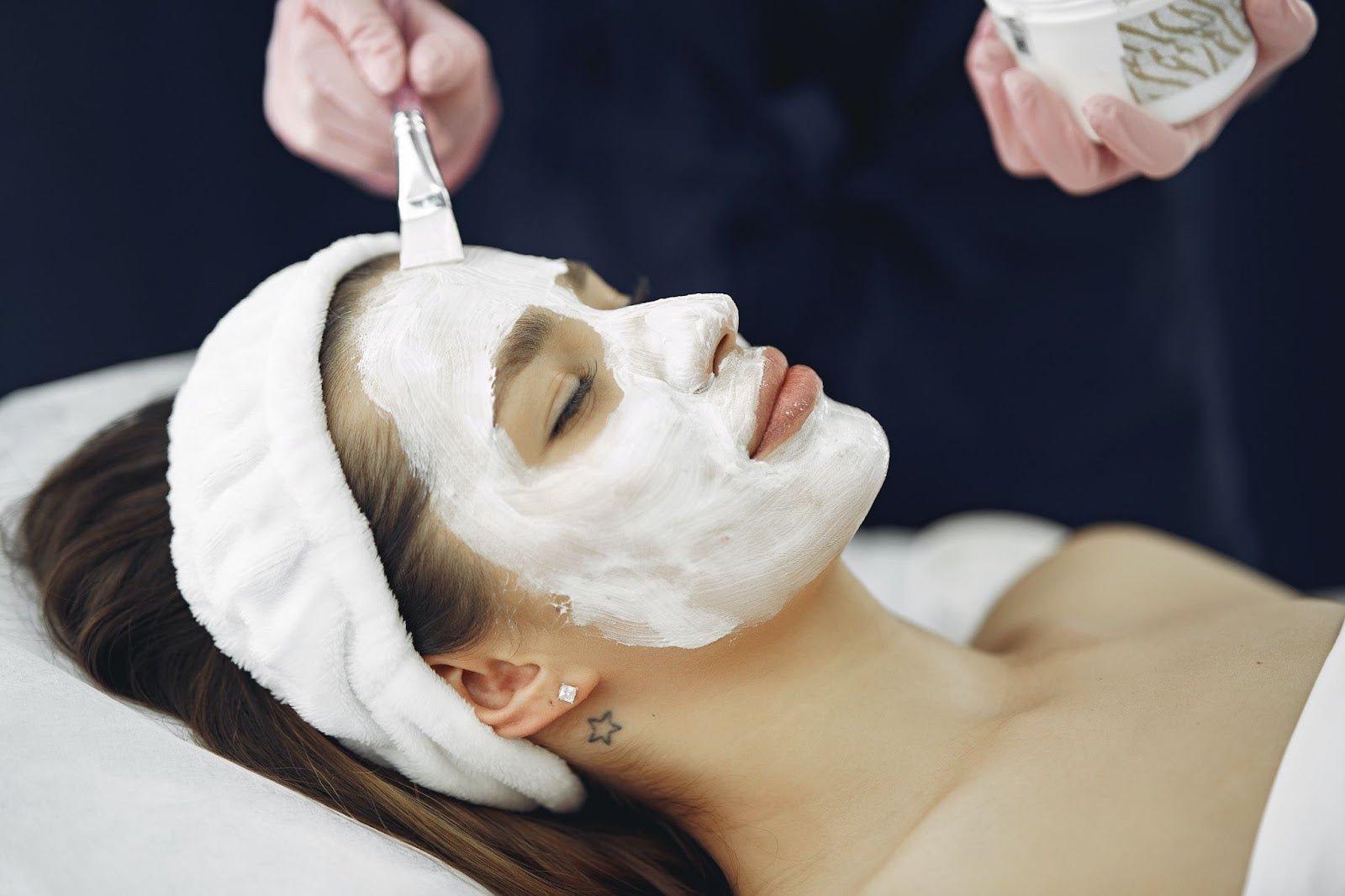We shampoo it, we brush it, we style it, we all take care of our hair. Hair is a very important part of the human body and yet, many people actually know very little about it. So have you ever wondered what your luscious locks are made of or how hair grows? Well, you’re in luck.
By discovering what your hair is made of, it can help you learn more about healthy foods and vitamins that your hair craves, and how to take better care of your hair.
Let’s explore the different hair types, hair anatomy, and figure out what exactly our hair is made of.
What Exactly Is Hair Made Of?
Hair is primarily made of a protein called keratin. Keratin is a strong protein that is shaped like a helix and is also a major building block for skin and nails. When we take in nutrients into our bodies, the proteins get broken down into amino acids, which then turn into the building blocks for hair. There are about 18 different types of amino acids that can be found in the hair. Some other important proteins and amino acids for hair growth include:
- Vitamin C
- Biotin
- Iron
- Zinc
- Niacin
- Lysine
- Arginine
- Methionine
- Cysteine
- And more
By eating a healthy diet packed with proteins, you will add amino acids and nutrients to your hair, which will help to strengthen your luscious locks and promote future hair growth.
Understanding the Structure of Your Hair
Let’s break down the structure of your hair in order to better understand what hair is made of.
The Hair Follicle
The hair follicle is beneath the skin, in the dermis, and is the part of the hair that you don’t see. The hair follicle acts as an anchor for the individual hair strands. When you pull a piece of hair out of the skin, you sometimes see a little bulb on the end. This is the hair follicle. The follicle maintains stem cells, which regrows the hair when a piece of hair falls off the head.
The Hair Shaft
Your hair shaft is the part of your hair that can be seen on your head and above the scalp. The hair shaft is made of keratin and is made up of three layers. Each layer has a specific purpose that protects your hair and gives you hair its unique qualities and characteristics. Let’s see the breakdown of layers in the hair shaft.
The Medulla
The medulla is the innermost layer of the hair shaft and it’s made of round cells. This structure is made of a soft, oily substance, and is almost invisible. The medulla is soft, fragile, and is only present in thicker hair types.
The Cortex
The cortex is the main, or middle layer, of the hair, where it lies between the medulla and the hair cuticle. The cortex is the thickest hair layer and provides many important characteristics of the hair. The cortex contains long keratin chains that help add elasticity, suppleness and resistance to the hair. The cells of the cortex are joined together by lipids and proteins that act as a rich cement or glue for the cells.
The cortex is a critical part of the hair shaft because it provides the strength, color, and texture of hair fibers. In humans, the cortex contains most of the hair’s pigment, which gives hair its color. The pigment is melanin which is also found in skin. So whenever you dye your hair or get a chemical treatment done, these changes will be affecting the cortex layer of your hair.
The Cuticle
The cuticle is a thin, protective layer, and is the outermost layer of the hair. The cuticle is made of shingle or scale-like dead cells that overlap and face downwards. Healthy cuticles will be smooth and flat, which gives hair a glowing shine and stronger protection.
The cuticle mainly works to protect the hair’s inner structure from damage, and to help control the water content of the hair fiber. By using heat protectant and by keeping chemical processes on the hair to a minimum, this will help the cuticle to remain healthy, and not become dry or brittle.
How Does Hair Grow?
When most people think of hair, they usually think of the hair on the head. For humans, the hair on our head can grow really long. However, as you probably know, hair can grow in many places on the body. For the hair on our head, the average rate of hair growth is 0.5 inches per month. This means that an average person’s hair can grow about six inches per year. In hair growth, there are three main cycles.
Anagen
The anagen, or active growing phase, is the longest phase of the hair growth process. During this phase, your hair follicle forms a new shaft and begins to grow new hair. At any given time, about 90% of the hair on your head is in the anagen phase.
Catagen
In the catagen phase, cell division stops, so the hair growth slows down. The blood flow is then cut off and the hair follicle begins to enter its resting period. This phase lasts for about two to three weeks.
Telogen
In the final phase of hair growth, the telogen phase, hair growth completely stops and the hair follicle is at rest. This period lasts for about three months. When new hair starts to grow, the old hair falls out.
The Types of Hair
Did you know that there are actually two or three different types of hair that grow on your body? When babies are developing, they grow lanugo hairs that are usually shed when they are 36 to 40 weeks old. These lanugo hairs are then replaced by vellus hairs. Vellus hairs are short, peach fuzz like hairs that grow almost everywhere on the body.
The purpose of these tiny hairs is to provide us with insulation. During puberty when hormones kick in, some of these vellus hairs turn into terminal hairs. Terminal hairs are typically darker and coarse, and are grown in places like armpits, the beard, and on the bikini line.
So what about the hair on our head? The hairs that grow on our head are also terminal hairs, but these hairs have a much longer growth period than hair on other parts of the body. For example, armpit and pubic hair have a growth period that may last up to about two months, whereas the hair on your head can grow for two years or more!
If you’re struggling with pesky body hair, KENZZI’s IPL Hair Removal Handset can help zap unwanted hairs. Over time, you will see a reduction in hair growth. Eventually, your hair might not even grow back at all.
Once hair grows, how does it become curly, straight, or a combination? When it comes to hair type, this depends on your hair follicles. Some hair follicles are structured in a way where they make curly hair, whereas others make straight hair. The hair follicles also determine whether your hair will be thick, coarse, fine, or thin.
How Does Hair Get Its Color?
What color hair do you have? Is it black, blonde, brown, or red? Is it curly, or straight, or a combination? Hair color comes from melanin, which gives hair its pigment. Melanin begins forming before birth and determines what color someone’s hair will be. The lighter someone’s hair is, the less melanin there is. A person with brown or black hair has a greater amount of melanin than someone with blonde or red hair. When people begin to age, they start to lose the melanin in their hair, which then makes their hair turn lighter, to a gray or white color.
How To Take Care of Your Hair
Since we have now learned about what hair is made of and where it comes from, it’s also very important to learn about how to take care of your hair. The main thing to know about hair is keeping it clean. Whether you wash your hair one to two times a week, or more often, when you wash your hair, always use a gentle shampoo and lather up your hair with your fingertips.
You may also want to use a conditioner to help your hair stay untangled and smooth. Always be kind and gentle when you are brushing or combing your hair. Use a wide-toothed comb and dry it gently with a towel.
Also, don’t forget to eat a healthy diet. This will not only add proteins, amino acids, and nutrients to your hair, but it will also help your body overall, inside and out.
In Conclusion
Now that you know what hair is made of, you can use this information to take better care of your hair and help promote hair growth. Eating the right foods and vitamins, keeping your hair safe from heat, and using natural oils, will all help to improve the overall condition of your hair, and will leave your luscious locks feeling healthy and happy.
Sources:
Read more

At some point or another, we will all gaze into the mirror and realize that our skin is not the same as it used to be. Wrinkles, creases, and laugh lines tend to be the first telltale signs, provid...

Having sensitive skin and trying to find the right moisturizer can be quite a challenging task. When your face feels irritated, the last thing you want to do is apply the wrong product. The right m...

Leave a comment
All comments are moderated before being published.
This site is protected by hCaptcha and the hCaptcha Privacy Policy and Terms of Service apply.